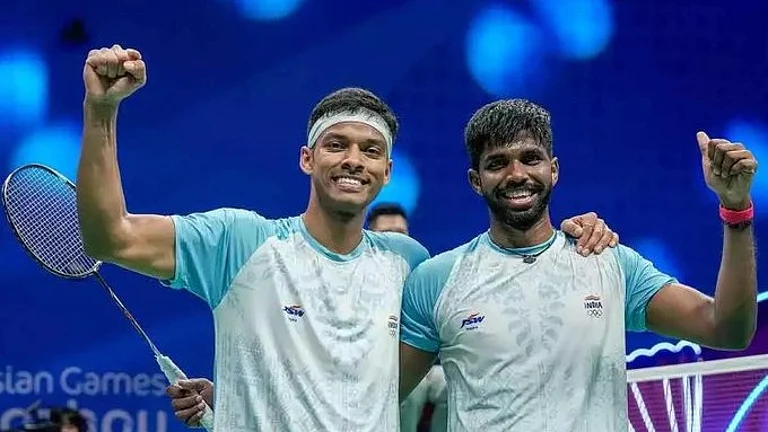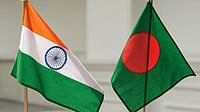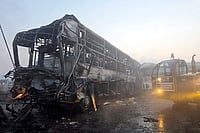Life for the 40-odd scientists at Pune's National Institute of Virology (NIV)has changed ever since SARS arrived in India. Working round-the-clock in specialmasks and protective gear, they have been virtually living on the campus. Takingtime off from his busy schedule, NIV officer-in-charge Dr A.C. Mishra, spoke toOutlook:
Why is it that none of the cases detected in India so far have been fatal?
It is very difficult to say anything on the basis of these cases. What wehave seen so far is the lower spectrum of the disease. This happens in everycountry. India is not a singular instance. But in due course, as more study iscarried out and more cases come to our notice, we will know how the approachneeds to evolve. Because it is low spectrum doesn’t mean it is less serious.
Do you attribute its low-spectrum occurrence to the absence of asuper-spreader?
We have not yet seen the super-spreader phenomenon in India unlike someOriental countries. So far the cases here have resulted from secondaryinfections caused by the primary case, wherein one individual has passed it onto people in close contact. The incubation period of the virus is between 2 and10 days. So it is often difficult to identify patients early on.
WHO experts believe that the virus can’t survive hot weather. Would thesummer bring good news?
Not enough data is available to support or counter that claim, but we trulywish that happens. High temperatures are not very conducive for most viral andbacterial diseases. We are tempted to think that surging temperatures will helpus.
With the onset of winter, do you fear a revival?
We don’t know because this mutant virus has only been identified recently.It may totally disappear or it may persist. Studies suggest that the SARScorona-virus is the fourteenth addition to its family. The species was neverseen earlier in humans and the other 13 were known to infect cattle, pigs,rodents, cats, dogs and birds. Of the 13, only two are known to cause flu andinfluenza. The SARS-causing virus has a unique RNA sequence not directly relatedto known human or animal viruses.
How can public panic be prevented?
There is no reason for panic at the moment because all the cases identifiedin India so far have been low spectrum. The media can do a good job, but it hasdisplayed several limitations. Instead of sensationalising the issue by runningafter patients, the media needs to educate people how the disease affectpatients, what differentiates the lower spectrum from the higher spectrum, howthe virus growth can be self-limiting. People are not unjustified in takingtheir time to understand the scientific ramifications of the infection. What isimportant is public awareness and initiative in reporting symptoms to hospitals.
When is the first breakthrough likely?
It is too early to say what course the menace would take if it manages toreach the higher spectrum. NIV has undertaken a detailed study of the virus inIndian conditions for which little data is available. The study would not onlysave costs, but will also be relevant for future reference.
Currently, we are developing our own diagnostic tools. The study willinitially focus on unravelling the genetic code of the virus and then compare itwith the sequences obtained from viruses in other laboratories. At a laterstage, we also aim to devise newer methods, wherein one can move away fromtechniques like isolation and quarantine and adopt specific interventionstrategies.
How has life at NIV changed? Are the growing requests for tests taking thefocus off research?
Tests mandate urgency. We are giving them our best at the moment. Butresearch continues to be our core activity and we cannot afford to take ourfocus off that. Life at the NIV is normal otherwise.
We must deliver results quickly, so our people have to work for long hours.They are taking precautions, hence there is no cause of worry for their safety.
As requests and samples are also pouring in from distant states, we need tomake more arrangements. The Indian Council for Medical Research, our parentbody, has other institutes under its umbrella and when the pressure outstripsour capacity, they will also come into play.
Rehabilitation of cured patients appears fraught with problems
We have seen people getting treated for pneumonia and ordinarycough-and-cold. When such people come out of the hospital, we don’tdiscriminate against them. The case of SARS patients should not be anydifferent. It is just an infection and once it is over, the affected people areas normal as anyone else.
How strong is the possibility of a recurrence?
We can’t quantify the recurrence possibility at the moment.
A shorter version appeared in the print magazine


























